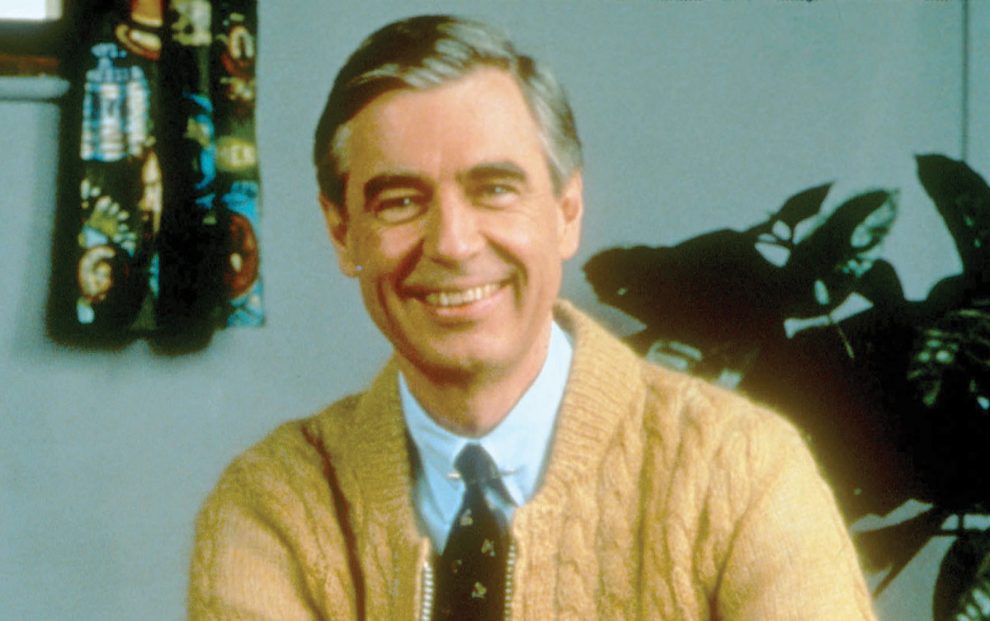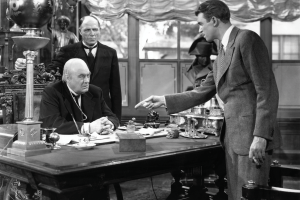In September 2002, on the one-year anniversary of the 9/11 terrorist attacks, I was 10 years old, living in New York, and full of frightened questions about the world. As the world’s landscape shifted into the new era of war on terror and tremendous political division, I clearly remember my life changing. And, as with many major life moments, there was Mister Rogers, offering to guide young people through fear and into hope.
As the country still reeled from what had happened the previous year, Fred Rogers had been asked to revisit his neighborhood set and speak to families. His remarks were simple yet profound: “When children bring up something frightening, it’s helpful right away to ask them what they know about it.” What my peers and I knew—and what we didn’t know about the world—frightened us beyond explanation. Rogers did his best to open the flow of communication he had mastered with his audience for so many years.
This honest attempt to guide others was all he could do in that moment. He, too, was at a loss in the wake of 9/11, and he was feeling as vulnerable as his viewers were. The year after the attack on the United States, when 2,977 souls had perished (a number that would climb drastically over the years due to 9/11-related illness), was a time of tremendous pain. Patriotism was on the rise, but that could only take us so far. America had undergone a deep trauma, one that even Rogers couldn’t escape.
People have tried to define Fred Rogers in many ways, but as I’ve explored his words, one thing stands out: his desire to talk about anything, always. No matter what happened, talking about it, he believed, was the first step toward understanding and coping. He was ready to stare down the “something frightening” and allow our fears to have space to breathe and be understood within our own context.
Rogers welcomed his own vulnerability, and he yearned to comfort others’ fears as well. This deep compassion makes him one of the most interesting figures of his time (and really any time). His ability to trust others and make space for their emotions still has an impact today.
Journalist Tom Junod, reflecting on Rogers’ impact, writes, “Fred was . . . a rather peculiar man, and it is not just his goodness but rather the peculiarity of his goodness that has made him . . . triumphant as a symbol of human possibility, although just about everything he stood for has been lost.” Junod’s unique connection with Rogers inspired the well-documented film It’s a Beautiful Day in the Neighborhood. Based on their friendship, the film captures an honest experience of vulnerability and wonder.
“What sadness do you feel, child, as you experience this fright?”
Rogers’ sense of wonder and compassion made a unique impact on people. He was also an ordained minister within the Presbyterian Church, and his television work was a clear and careful extension of his ministerial arms to a sensitive audience: children. Some people have referred to him as a “televangelist for toddlers,” but his aim was never to convert his audience. Instead, using puppets rather than a pulpit, Rogers shared a message of children’s inherent worth and unconditional lovability.
Fred Rogers encouraged children to express their emotions with honesty—but when I watch his show now, as a parent of a 2-year-old and a newborn, I am blown away by how many of his messages are directed at the adults in charge of caring for little ones. He planted wisdom in the hearts of the adults willing to take him seriously and listen.
In a 1985 interview, when Oprah Winfrey asked Rogers what he believed to be the biggest mistake parents make when raising their children, he answered: “Not to remember their own childhood. . . . When you are a parent you have a new chance to grow.”
Today, as I navigate the challenges of modern parenting, Rogers is my spiritual guide, mentoring me through the legacy of his work. At times, parenthood feels like an overwhelming task, but his messages of honesty, love, and compassion give me clear guidance on how to be the parent my child needs in the most humble and effective manner. This, truly, is the work of a saint.
As I try to be a good father in today’s turbulent world, I often pray to three figures: St. Joseph for guidance, Henri Nouwen for spiritual insight, and Fred Rogers for loving kindness. In those moments of reflection, as I find myself grappling with how to navigate world news with young children, I think of Rogers’ message after 9/11. The answer to my struggles may never be clear or precise; that’s simply not how this works. However, if I allow Fred Rogers’ guidance through fear to inspire how I wonder aloud with my children, it might sound something like this: “I’m not sure how to make sense of the pain in our world right now, but we can start to understand it by first naming the pain in our hearts. What sadness do you feel, child, as you experience this fright?”
Embracing Rogers’ teachings helps me create a safe space for my kids to explore their feelings and fears in an uncertain world. Through this, I hope to instill in them the same wonder and kindness Fred Rogers shared with generations of children.
This article also appears in the January 2025 issue of U.S. Catholic (Vol. 90, No. 1, pages 45-46). Click here to subscribe to the magazine.
Image: FOTOS International/ZUMAPRESS/Newscom












Add comment